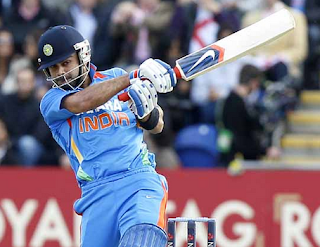“If you’ve ever looked at another person and thought, ‘Well, at least I’m doing better than he is,’ or ‘Wow, I wish I could be doing as well as she is,’ you’re not alone,” says Josh Smyth, professor of biobehavioral health and of medicine at Penn State University.
“This phenomenon—first proposed in the 1950s—is common in daily life. When we’re unsure of how we’re doing, we can reduce uncertainty by getting information from others. People with chronic illnesses are particularly likely to compare themselves to others with the same illness.”
In their qualitative synthesis of over 30 studies published in the current issue of Health Psychology Review, Smith and researchers at Syracuse University and the University of Iowa found that people who compare “downward” to others who are worse off are less depressed than people who compare “upward” to people who are better off.
Downward comparisons often are associated with immediate positive feelings such as relief and gratitude.
But nearly as often, studies show the exact opposite. People who compare upward do better on physical health measures and report feeling hopeful about their ability to improve. Still other studies demonstrate the negative effects of both types of comparisons—downward comparisons can lead to sadness or worry and upward comparisons can lead to dejection.
Why the difference? According to Danielle Arigo, a graduate student at Syracuse University, this is exactly what researchers need to know before they can help people benefit from making comparisons.
“Right now, we know that it can go either way,” she says. “Someone’s doing better than you are? That can be either inspirational or depressing. Someone’s doing worse? That can give you some relief, or it can get you thinking about your own situation getting worse in the future.
“The problem is that although we don’t quite understand how social comparisons work, they are frequently used in health interventions for individuals with chronic illness.”
For example, health-education materials often include images or descriptions of patients with a particular medical condition to get patients thinking about a hypothetical future. Public service announcements typically use similar tactics, often with limited effect.
Arigo says that studying the process of social comparison can improve the way we use positive and negative examples of behavior.
“We found that previous research points to differences in what people think about while they’re reading, specifically, how similar they are to the person they’re reading about,” she says.
“Focusing on similarities between you and people doing well will likely lead to feeling good. Focusing on differences between you and people doing poorly will likely lead to feeling good.
“But if you focus on differences between you and someone doing well, or similarities between you and someone doing poorly, you’ll likely feel worse. What people focus on appears to be associated with personality traits, mood, and a variety of other factors that are not yet well understood.”
According to Smyth, this research summary identifies specific gaps in the current knowledge about social comparisons, including the factors that determine whether a person focuses on similarities or differences between themselves and others.
“In the future, this information may help to improve health communication efforts,” he says.

.png)












